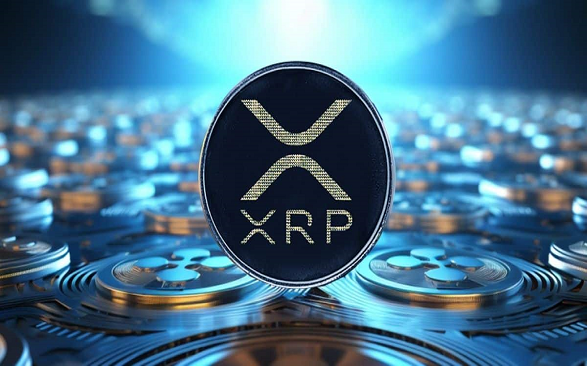by Jude Ayua
On 13 March 2025, the US Securities and Exchange Commission (US SEC) published a proposal on its website, titled Comprehensive Proposal: XRP as a Strategic Financial Asset for the U.S. Authored by Maximilian Staudinger, a financial advisor, the proposal was submitted to the SEC Crypto Task Force.
The proposal outlines a comprehensive plan to leverage XRP for financial transactions, focusing on its potential to replace traditional Nostro accounts—bank accounts held in foreign currencies for cross-border transactions. Key financial insights include global Nostro accounts worth $27 trillion, with $5 trillion being the share of the US.
The proposal claims that adopting XRP could free $1.5 trillion from banking liquidity, save $7.5 billion annually in transaction fees, and enable the establishment of a national Bitcoin reserve. Additional economic benefits include:
- Federal Payment Cost Reductions: Estimated at $500 billion over 10 years by implementing XRP for IRS and Social Security payments.
- Capital for Bitcoin Reserves: Direct reinvestment of $1.5 trillion into BTC, though the feasibility is questioned due to supply constraints.
Legal and regulatory framework
The proposal addressed the years-long case between the US SEC and Ripple, recommending actions by different agencies to clarify XRP’s legal status as follows:
- US SEC: To classify XRP as a payment network, not a security; introduce a neutral mediation panel to enable SEC to resolve the Ripple case without backlash.
- DOJ: The Department of Justice (DOJ) to remove its restrictions for banks, granting legal clearance for XRP-based transactions; evaluate economic impact of XRP ban, determining if ban harms financial stability.
- Federal Reserve and OCC: The Fed and the Office of the Comptroller of the Currency (OCC) to mandate XRP for bank liquidity solutions and direct integration into financial policy.
- Treasury: To classify XRP as a national financial asset to provide immediate legal clarity.
The proposal also recommends a Presidential Executive Order for immediate legal clarity and directive to the SEC, DOJ, and Treasury to classify XRP as a payment asset.
Read also: XRP is predicted to reach $10 as Ripple’s legal battle nears end.
Context to the SEC-Ripple case
The US SEC’s lawsuit against Ripple began in 2020 when the SEC charged Ripple with conducting an unregistered securities offering through XRP sales.
In July 2023 the Southern District of New York ruled that XRP sales to retail traders on crypto exchanges are not securities.
However, the SEC appealed the decision in October 2024. On 19 March 2025, a few days after the SEC published its proposal, Ripple CEO Brad Garlinghouse announced that the SEC had withdrawn its appeal, implying an end to the case.
Implementation plans and implications
Staudinger proposes both a standard 24-month implementation plan and an accelerated 6-12 month plan, with specific phases and timelines. The accelerated plan relies on emergency financial legislation, Federal Reserve and OCC mandates, and strategic Bitcoin acquisition using freed capital. Necessary actions include a Presidential Executive Order for immediate XRP legal clarity, an emergency legislation mandating banks to integrate XRP for liquidity solutions, and mandates by the Federal Reserve and OCC to allow immediate XRP usage for Nostro replacement.
If the proposal is adopted, XRP could streamline cross-border transactions and government payments. However, the proposal’s errors and the broader crypto strategy, including Trump’s reserve plan, add complexity to its implementation. Also, its ambitious claims and factual inaccuracies have sparked widespread debate, especially given the ongoing regulatory uncertainty surrounding XRP’s classification. For example, the proposal erroneously claims the purchasing of 25 million BTC at $60,000 each, exceeding Bitcoin’s 21 million cap, and also mathematically illogical, which raises questions about its credibility.
Read also: Grayscale, CoinShares join XRP ETF race amid XRP price decline.
Alignment with US crypto strategy
The proposal aligns with President Donald Trump’s executive order establishing a Strategic Bitcoin Reserve and US Digital Assets Stockpile, which includes Bitcoin (BTC), Ethereum (ETH), XRP, Solana (SOL), and Cardano (ADA). It further clarifies the roles of different cryptocurrencies:
- XRP: For state-level financial transactions, optimizing government payments and interbank liquidity.
- SOL: Used for high-speed blockchain applications, such as real-time government databases, secure voting mechanisms, and digital identity management.
- ADA: Best suited for academic credentialing, smart contracts for government services, and secure infrastructure management.
The document emphasizes that SOL and ADA should enhance efficiency and security for state applications, while XRP remains the key asset for financial transactions, ensuring a competitive U.S. digital financial infrastructure.
Market and public reaction
Since the proposal’s publication, XRP’s market performance has remained volatile. However, XRP’s recent surges are attributed to regulatory optimism and Trump’s crypto reserve announcement.
Critics have dismissed the proposal as unrealistic speculation, questioning its mathematical errors and the US’s willingness to adopt XRP given Ripple’s control over two-thirds of its supply. Financial analysts and experts are also skeptical, especially about its impracticality.
Author’s background and context
There is little information about Maximilian Staudinger beyond his German identity and association with Deutsche Vermögensberatung Aktiengesellschaft (DVAG), a financial services firm. He has previously advocated for XRP’s potential on X, engaging with figures like gold advocate Peter Schiff following Trump’s mention of XRP in the national crypto reserve plan. This context suggests Staudinger’s proposal is part of a larger advocacy effort. It is worth noting that the proposal’s submission to the SEC does not imply official endorsement.
Read also: XRP Surge: 2,300+ whale transactions in 8 hours; 500K+ new wallets on XRP Ledger.
Jude Ayua is a policy analyst at CAB. A lawyer, Jude is an associate at Infusion Lawyers where he is a member of the Blockchain & Virtual Assets Group. He is also a member of the Policy & Regulations Committee of the Stakeholders in Blockchain Technology Association of Nigeria (SiBAN). Jude reports and writes on crypto policy and regulations. jude@infusionlawyers.com
Discover more from Crypto Asset Buyer
Subscribe to get the latest posts sent to your email.




